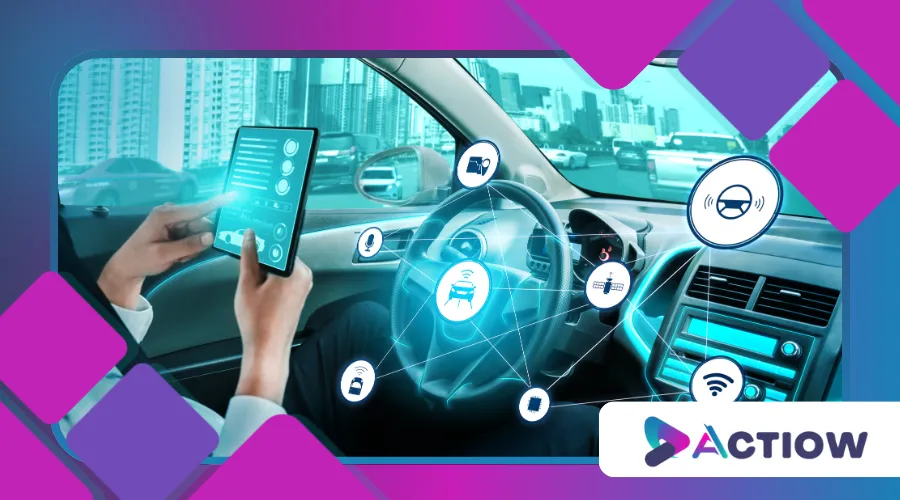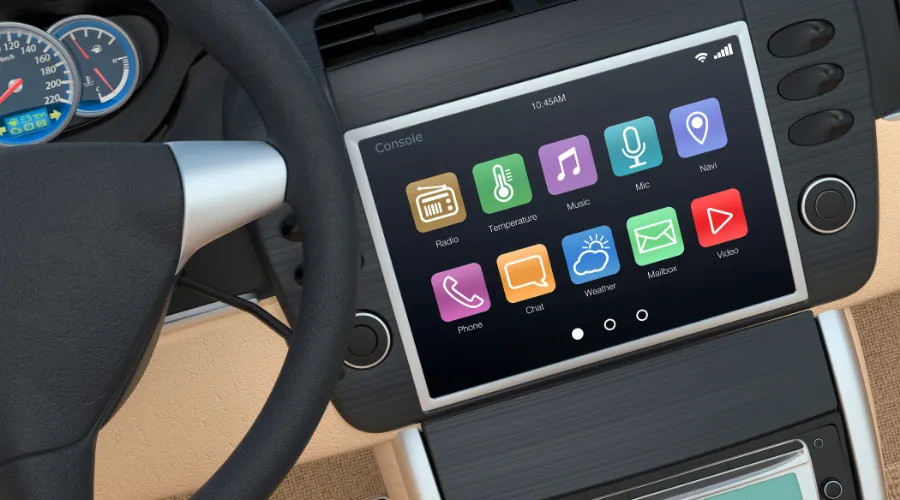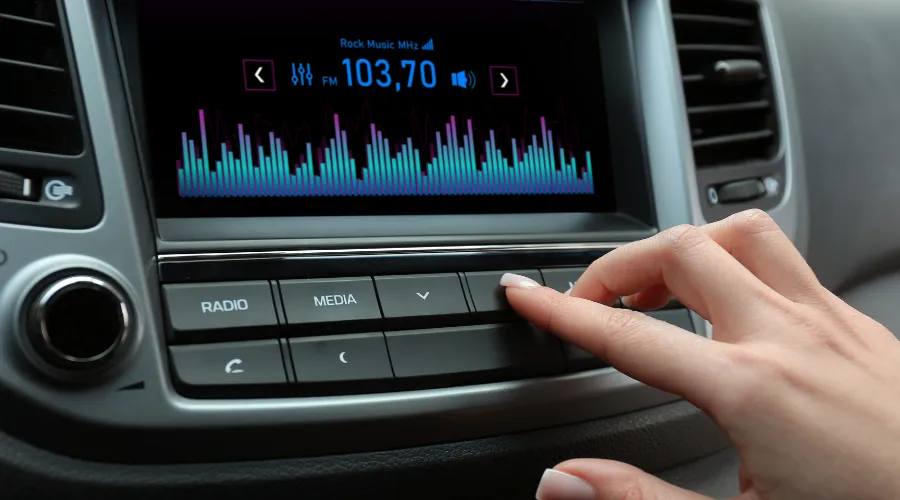Infotainment Systems: How to Choose the Best for Your Car

Anúncios
Modern cars are no longer just about horsepower and fuel efficiency—infotainment systems have become a central feature, blending connectivity, entertainment, and functionality.
With so many options available, selecting the right one can feel overwhelming.
Should you prioritize touchscreen responsiveness, smartphone integration, or voice control?
Anúncios
This guide breaks down the key factors to consider, ensuring you make an informed decision.
As technology continues to evolve, so do consumer expectations.
Today’s drivers seek systems that not only entertain but also enhance safety and convenience.
Understanding the latest trends and features can help you choose a system that meets your needs and preferences.
Additionally, staying informed about upcoming technologies can give you an edge in selecting a system that won’t become outdated quickly.
The right infotainment system can significantly enhance your driving experience, making daily commutes more enjoyable and less stressful.
Why Your Car’s Brain Matters More Than Ever
Gone are the days when a simple radio and CD player sufficed.
Today’s drivers expect seamless connectivity, intuitive interfaces, and advanced features like real-time navigation and AI-powered assistants.
According to a 2023 study by J.D. Power, infotainment systems are among the top three factors influencing car-buying decisions, yet they also account for the most complaints when poorly designed.
The demand for improved infotainment experiences is driving automakers to invest heavily in research and development.
As a result, we’re seeing innovations that integrate voice recognition, touchless controls, and even gesture-based interfaces.
These advancements aim to create a more user-friendly experience while minimizing distractions on the road.
Moreover, a well-designed infotainment system can enhance the overall value of a vehicle, making it more appealing to potential buyers.
Understanding the importance of these systems can also help consumers advocate for better technology in their vehicles.
So, how do you avoid buyer’s remorse?
Let’s dive into the essentials.
+ How Regenerative Braking Works in Electric Cars
1. Screen Size & Interface: Function Over Flash
A massive display might look futuristic, but usability trumps aesthetics.
Look for:
- Responsive Touchscreens (at least 8 inches for ease of use)
- Physical Controls (knobs and buttons for quick adjustments)
- Customizable Layouts (prioritize frequently used apps)
Table 1: Popular Infotainment Screen Sizes & Their Pros/Cons
| Screen Size | Pros | Cons |
|---|---|---|
| 7″ | Compact, less distraction | Limited visibility |
| 10″ | Better visibility, modern look | Can be cumbersome in small cabins |
| 12″+ | High-end feel, split-screen options | Expensive, may lag |
While a larger screen can enhance visibility, it’s essential to ensure that it does not distract from driving.
Consider how the interface responds to touch and whether it allows for easy navigation between apps.
User reviews can provide insight into real-world performance, helping you make a more informed choice.
Additionally, the layout should facilitate quick access to essential functions, reducing the time spent looking away from the road.
A well-designed interface can make a significant difference in the overall driving experience, contributing to both safety and enjoyment.

2. Smartphone Integration: Apple CarPlay & Android Auto
Wireless connectivity is now a must-have.
While most infotainment systems support Apple CarPlay and Android Auto, not all offer wireless functionality.
If you hate plugging in your phone, prioritize models with:
- Bluetooth 5.0+ (faster pairing, better stability)
- Dual-Phone Pairing (for households with multiple drivers)
- Over-the-Air Updates (ensures long-term compatibility)
These features not only enhance convenience but also ensure that your system remains up-to-date with the latest software and app versions.
Additionally, look for systems that allow for seamless switching between devices, making it easier for multiple users to connect.
As more apps become available for in-car use, having a robust integration system will enhance your driving experience.
Moreover, consider the availability of third-party apps that can expand the functionality of your infotainment system, providing even more options for entertainment and navigation.
3. Voice Control & AI Assistants: The Future of Hands-Free Driving
Voice commands reduce distractions, but not all systems are created equal.
Some, like BMW’s iDrive or Mercedes’ MBUX, use advanced AI to learn driver habits, while others struggle with basic requests.
Test these features before committing—accuracy matters.
The ability to control navigation, music, and phone calls without taking your hands off the wheel is a game-changer for safety.
Moreover, as AI technology continues to advance, we can expect even more intuitive systems that understand natural language and context.
This evolution can significantly enhance the user experience, making driving more enjoyable and less stressful.
Additionally, consider how well the voice control system integrates with other features, such as navigation and music selection, to provide a truly hands-free experience.
A robust voice control system can also help in reducing cognitive load, allowing drivers to focus more on the road ahead.
++ Cars with Facial Recognition: Technology at the Service of Safety
4. Audio Quality: Don’t Settle for Subpar Sound
Even the slickest interface falls flat with poor speakers.
If music is a priority, consider:
- Premium Sound Systems (e.g., Bose, Harman Kardon)
- Equalizer Customization (adjust bass, treble, and balance)
- Noise Cancellation (reduces road noise for clearer calls)
Table 2: Top Car Audio Brands & Their Key Features
| Brand | Key Feature | Best For |
|---|---|---|
| Bose | Balanced sound, deep bass | Luxury sedans |
| Harman Kardon | Crisp highs, immersive sound | SUVs & electric cars |
| Bang & Olufsen | Studio-quality precision | High-performance vehicles |

When evaluating audio systems, consider not just the hardware but also the software that drives sound quality.
Many brands offer customizable settings that allow you to tailor the audio experience to your personal preferences.
Additionally, reading reviews and conducting in-person tests can help you determine which system best meets your audio needs.
A good audio system can elevate your driving experience, making long trips more enjoyable and engaging.
Investing in quality sound can also enhance the clarity of phone calls and navigation prompts, contributing to overall safety.
5. Navigation: Built-In vs. Smartphone-Based
While Google Maps and Waze dominate, built-in navigation still has perks—like offline maps and integration with dashboard displays.
Weigh the pros and cons before deciding.
Built-in systems often provide a more seamless experience, as they are designed specifically for the vehicle’s interface.
However, smartphone-based navigation apps tend to receive more frequent updates, ensuring that you have the latest maps and traffic information.
Ultimately, your choice may depend on how you plan to use navigation while driving.
Consider factors such as the frequency of software updates and the availability of features like real-time traffic alerts.
Additionally, some built-in systems offer unique features, such as augmented reality navigation, which can enhance the driving experience.
For more detailed comparisons and reviews of infotainment systems, visit Car and Driver.
6. Future-Proofing: Updates & Expandability
A system that can’t evolve will feel outdated fast.
Look for:
- Modular Hardware (supports future upgrades)
- Regular Software Updates (extends usability)
- App Store Access (expands functionality over time)
As technology advances, having a system that can adapt will save you from needing a complete replacement.
Regular updates can introduce new features and fix bugs, ensuring that your infotainment system remains functional and relevant.
Additionally, consider systems that allow for third-party apps, which can greatly enhance functionality and personalization.
Future-proofing your infotainment system can also enhance the resale value of your vehicle, as buyers are increasingly looking for modern features.
Investing in a system that supports updates and upgrades can lead to a more satisfying long-term ownership experience.
Final Verdict: Balancing Needs & Budget
The best infotainment systems strike a balance between innovation and practicality.
Whether you prioritize cutting-edge tech or user-friendly simplicity, knowing what to look for ensures you get the most bang for your buck.
Key Takeaways:
✔ Screen responsiveness > sheer size
✔ Wireless smartphone integration is a game-changer
✔ Voice control should work seamlessly
✔ Audio quality enhances the driving experience
✔ Future-proof systems save money long-term
Still unsure? Test-drive different models—nothing beats firsthand experience.
The right infotainment system can transform your daily commute into a connected, enjoyable journey.
